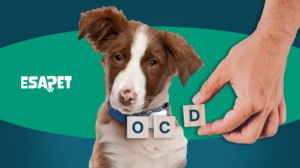How To Get a Therapy Dog: Guidelines and Requirements

Therapy dogs offer vital support. They help people facing disabilities, illnesses, or mental health issues. They provide companionship and comfort. The trained canines reduce stress. They also ease loneliness and even physical pain for their owner.
Therapy dog organizations visit during therapy visits. They also attend classes with children on the autism spectrum. And they assist veterans with PTSD. The dogs have an amazing ability to lift people’s spirits and improve their lives.
What Is a Therapy Dog?
A trainer trains a therapy dog to offer affection and support. It works in hospitals, retirement homes, schools, and counseling centers. The dogs are alongside their owners. They bring joy and lessen stress for persons in need through friendly interactions.
Therapy dog help in hospitals, retirement homes, and schools. They make patients in hospitals feel less stressed and lonely by playing with them. Older folks in retirement homes love their company. In schools, they assist kids who find reading hard or have other problems.
These dogs get special training to be calm and friendly. They have to pass tests. The tests prove they can handle different places without getting upset or aggressive. Certified dogs are gentle and don’t jump or scratch. They bring comfort and happiness to people of all ages.
Therapy Dog Training
Training a dog for therapy work requires commitment, patience, and following a structured training program. These dogs bring comfort and joy to people in hospitals, nursing home, schools, and various other facilities. Let’s take a closer look at the training process.
Step #1: Introduction to Being Calm and Well-Behaved
The initial stage of therapy dog training focuses on socialization and obedience. Dogs learn to be calm, polite, and responsive to basic commands such as sit, stay, come, and lie down. Training begins in puppyhood, using positive reinforcement like praise, petting, and treats. As they mature, dogs practice these behaviors in busy environments with many distractions.
Step #2: Developing a Steady and Calm Nature
For therapy work, dogs need to be chill and patient. Puppies go through tests to see if they’re cool with gentle touches, not too shy or aggressive, and can focus even when things get busy. Training and hanging out with people help them learn to stay relaxed around kids, seniors, and noisy stuff like medical gear.
Step #3: Advanced Training for Work
Once obedience skills are proven in many environments, advanced training for working as a therapy dog begins. They must understand how to walk politely on a dog’s leash without pulling, sit calmly for petting or attention, and not beg or get grabby with food. Commands like leaving it and taking treats gently are emphasized. They need to watch for emotional cues from humans and respond by staying still or leaving if distressed.
Tips and Recommendations for Training a Therapy Dog
Training a therapy dog is a rewarding journey that requires dedication and patience. Proper training not only prepares your dog for therapy work but also ensures the safety and well-being of both your canine companion and the people they will be assisting. Below are some essential tips and recommendations to guide therapy dog owners in their training journey.
Proper Socialization from an Early Age
Proper socialization is crucial for therapy dogs, starting from a young age between 8-16 weeks. It helps them become comfortable in various environments and prevents fear, anxiety, and frustration later in life. Socialization for older dogs includes exposure to different sights, sounds, surfaces, and experiences, such as visits to busy public places like pet stores, children’s parks, and outdoor cafes.
Positive Reinforcement Techniques
Using positive reinforcement techniques is key to effective training. Rewards such as praise, affectionate petting, and small treats keep the training motivational, positive, and stress-free. Focus on rewarding desired behaviors rather than correcting unwanted ones, avoiding raising your voice, physical corrections, or intimidating expressions
Graduated Desensitization to Distractions
Graduated desensitization involves practicing basic commands in increasingly distracting environments. This builds focus, concentration, and self-control in your dog. Start in low-key areas and gradually increase difficulty, staying below the dog’s stress threshold. Reward heavily for paying attention to you rather than distractions.
Target Object Training
Target object training teaches gentle interaction with indicated objects, important for respectful introductions to individuals. Start with nearby body parts or stationary objects and progress to moving objects. Reward without force to keep the experience positive
Lots of Handling Experiences
Therapy dogs should enjoy being hugged, held, and having their paws touched. Expose them to different types of people, including children and adults, to build tolerance and trust. Make handling exercises fun and introduce new sensory experiences gradually.
Certification Preparation
Preparing for certification involves assessing disposition and practicing essential commands like sit, stay, and loose leash walking. This helps ensure a stress-free evaluation, making the dog a model candidate for passing. Proper certification ensures reliability during volunteer work.
Therapy Dog Benefits
Therapy dogs, with their friendly and patient nature, bring significant psychological and physical benefits to people’s lives. Let’s delve deeper into how they enrich lives in various circumstances.
Stress Reduction
Interacting with a therapy dog triggers the release of oxytocin and endorphins, reducing cortisol levels and calming the body’s stress response. This leads to lower blood pressure, heart rate, and muscle tension, with just 15 minutes of petting reducing stress levels by up to 65%
Mood Enhancement
Therapy dogs, with their exceptional ability to sense human emotions, provide unconditional love and positive reinforcement, lifting spirits and countering sadness, loneliness, or depression. Their empathy and attention serve as social buffers, particularly beneficial for those coping with anxiety or post-traumatic stress disorder, as the calming effect reduces symptoms and leaves patients feeling emotionally uplifted after visitations.
Comfort and Distraction
Therapy animals like dogs offer a comforting distraction during painful medical procedures, allowing patients to focus on petting soft fur instead of discomfort. For those recovering from injuries, or illnesses, or coping with disabilities, their affection and play provide comfort, purpose, and enjoyable time passing. The presence of therapy dogs empowers patients, making them feel safe, protected, and less alone.
Social Motivation
In treatment centers, petting therapy dog serves as an excellent icebreaker, encouraging conversations and connections among kids, seniors, and veterans. Dogs help break down social barriers, particularly for those who were once isolated, energizing them to engage socially and promoting mental stimulation.
Physical Motivation
Therapy dogs motivate rehab patients to work harder during sessions, whether it’s walking, stretching, or range-of-motion exercises. Incorporating activities like playing fetch adds fun and fulfillment to mundane tasks, resulting in improved mobility, flexibility, and muscle endurance after just 30 minutes.
Communication Facilitation
Therapy dogs serve as bridges to communication for some individuals, providing a comfortable starting point before opening up to people. By lowering social pressures and defusing tensions, dogs enable individuals to practice basic conversation skills. Their acceptance fosters more effortless discussions, leading to more personal dialogues with others.
Therapy Dog Organization and Service Dogs: What is the Difference?
While therapy dogs and service dogs play crucial roles, they differ significantly in their functions. Service dogs undergo specialized training to assist individuals with disabilities by performing essential tasks, whereas therapy dogs individually trained to offer comfort and support through companion visits.
Service dogs have legal rights to accompany their handlers in public spaces, unlike pets. They’re trained to execute disability-related tasks, such as guiding the visually impaired, alerting individuals with seizures, or aiding those with mobility challenges.
These tasks may include retrieving items, opening doors, administering medication, and assisting during emergencies. Service dogs undergo rigorous training to perform these tasks reliably, even in distracting public environments.
Therapy dogs focus on spreading joy and comfort through visits to hospitals, nursing homes, and schools. They aim to brighten people’s days with friendly interaction and canine companions-hip, but they lack legal public access rights as they don’t perform disability-related tasks.
In contrast, service dogs undergo intensive training to assist individuals with disabilities by independently performing essential functions. Only service dogs have the legal right to accompany their handlers in all public spaces, thanks to their extensive training and ability to provide direct assistance to those in need.
Therapy Dog and an Emotional Support Dog: What is the Difference?
Therapy dogs and emotional support dogs serve distinct roles, despite both providing comfort and companionship.
Therapy dogs work in places like hospitals and schools, offering affection and comfort to patients, students, and residents. They undergo training and testing through assistance dog organizations, ensuring they have the disposition and skills for professional environments.
In contrast ESAs, offer therapeutic benefits to their owners in everyday life. They don’t require specific training but must be prescribed by a licensed mental health professional to assist with a disability. ESAs are allowed to live with their owners in housing with no-pet policies, as they’re protected under housing laws that mandate accommodations for individuals with disabilities.
A critical distinction lies in the access rights: therapy, unlike service dogs, can accompany their handlers into any public space when working, while emotional support dogs do not have such privileges.
ESAs cannot enter places where pets are prohibited, like restaurants or grocery stores, and lack the legal status and protections granted to service animals under the ADA. Therapy dogs require professional training, whereas ESAs need no specialized training.
The advantages of having a service animal for support in emotional include:
- Housing access: Landlords must allow ESAs in no-pet housing under the Fair Housing Act.
- Airline travel: ESAs can travel in the cabin of flights with their owners, unlike regular pets.
- Reduced anxiety and depression: Companionship from a dog can alleviate feelings of loneliness, anxiety, and depression.
- Increased motivation: Caring for an animal can encourage individuals to maintain routines, exercise more frequently, and socialize.
- Lower stress levels: Interacting with a furry friend releases calming oxytocin, lowering blood pressure and heart rate.
While both therapy and emotional support animals offer therapeutic benefits, the key difference lies in their roles: therapy animal assisted with dogs are trained for public settings, whereas ESA dogs provide companionship primarily in the home and during travel, with some limited public access rights.
ESAs are Exempt from Pet Fees for Housing |
|
According to the FHA, Emotional Support Animals and Service Dogs are exempt from any pet fees, deposits or pet rents. |
How To Get Therapy Dog
Being a dog handler for a top therapy dog program is a rewarding journey that requires dedication. Here’s how to do it:
- Adopt a dog: Choose a friendly service animals breed like Labrador Retrievers, Golden Retrievers, Poodles, or soft-coated Wheaten Terriers. The dog must be at least 1 year old. Visit your local shelter to find the perfect therapy dog candidate.
- Obedience training: Enroll your dog in basic obedience classes to establish leadership and teach essential commands.
- Therapy dog training: Sign up for a certification program to prepare your dog for public interactions and stressful situations.
- Pass the evaluation: Your dog must pass an assessment of temperament and behavior with strangers that has an ability to interact gently with stranger.
- Register your therapy dog team: Register with therapy dog organizations for insurance and volunteer opportunities like Therapet or Alliance of Therapy Dogs.
- Start volunteering: Visit hospitals, nursing homes, and schools to provide pet therapy and support.
How to Get an Emotional Support Dog
Emotional support dogs are service animals that can provide immense comfort and companionship to those suffering from certain disabilities or mental health conditions. Here are the step-by-step requirements to legally obtain an emotional support dog:
Step #1: Get a Letter from a Licensed Mental Health Professional
To start, you need a diagnosis of a recognized disability or mental health condition. Get it from a licensed mental health professional. This could be a therapist, psychologist, or psychiatrist. The professional must assess that a support dog could reduce your symptoms. They will give you a letter. It will recommend a support animal for emotional help.
Step #2: Register your Emotional Support Animal
Once you get your letter of recommendation, you can register your dog. Use an ESA registration service. For example, you can use ESA Pet. When you finish registration, you will get an ESA letter. It will include an ID card. These will verify your dog as an emotional support animal. It has protections under the Fair Housing Act and Air Carrier Access Act.
Step #3: House Train and Socialize Your Dog
Before bringing your ESA dog into public spaces, it must be trained to behave at home and on a leash. It must have basic obedience skills and be socialized to show good behaviors. Pet stores and animal shelters often offer basic classes. The classes prepare dogs to be good ESA companions.
Step #4: Use Your ESA Dog’s Protections
With registration documentation, you can live with your ESA dog in housing that normally has pet restrictions. You can also bring your ESA dog on flights, hotels, or other public accommodations where pets are not normally allowed. Emotional support dogs do not have the specialized training of therapy animals but still provide benefits with their companionship.
Get your Official ESA Letter Consultation from a licensed therapist.
Get ESA Letter NowHere are some key advantages of emotional support dogs compared to therapy animals:
- ESAs have rights under the Fair Housing Act and Air Carrier Access Act. These laws let them accompany owners in no-pet housing and on flights for a small fee.
- They provide continuous comfort. They live with their handlers to ease conditions like anxiety, depression, and PTSD.
- Living together creates a bond. It offers stability and comfort. These are unmatched by therapy.
Using ESA Pet ensures a simple and affordable registration process. Follow these steps to obtain your licensed support dog for vital mental health assistance.
Therapy Dogs Laws
Therapy dog programs are growing in popularity. But, there are many laws and standards that therapy dog handlers and their dogs must follow. These rules ensure the health, safety, and welfare of all involved.
Here are the current therapy dogs laws.
- Therapy Dog Registration: Therapy Dogs must be registered with recognized organizations. These include Therapet, Alliance of Therapy Dogs, and Therapy Dogs International, These groups ensure dogs have passed evaluations for their behavior and training.
- Vaccinations: Dogs need core vaccinations including rabies, DHPP, and bordetella. Owners must keep records.
- Public Access Training: Therapy dogs undergo public access training. They must show calm, well-behaved manners around people, noises, and equipment.
- Handler Training: Handlers of therapy dogs must also receive training. They take the dogs on visits. Handlers learn about liability. They also learn to monitor the dog’s stress. They learn to properly introduce and work with the dog during visits.
- Identification: Therapy dog teams get identification from their registering organization. They present it when working. This ID helps facilities. It shows if the dog is trained and vaccinated.
- Health Standards: Therapy dogs must be in good health with no communicable illnesses. Owners agree to limit visits if their dog’s health suffers. Any health or behavior issues could require reassessing. They would check if the dog can keep visiting.
Requirements for a Therapy Dog
There are several key requirements that a dog must meet in order to be considered for therapy dog work.
Health and Temperament
The dog must be at least 1 year old. It must have a complete vet exam to ensure good health and enough vaccinations. Temperament is crucial. The dog must be friendly, gentle, calm, and tolerant of strangers and crowds. They cannot show any signs of aggression.
Training and Certification
All therapy dogs need basic obedience training. They must pass the American Kennel Club Canine Good Citizen test or a similar evaluation. This tests skills. It includes sitting for petting and walking on a leash. It also includes behaving around other dogs and distractions. The dog also needs therapy dog certification. It must come from an organization like the Alliance of Therapy Dogs.
Working with a Handler
A therapy dog works as a therapy animal-handler team. The handler is responsible for the dog’s behavior. They ensure the dog brings comfort and joy to patients, not disruptions. The handler undergoes training. They learn to work well with different groups. They do this in places like hospitals, nursing homes, or schools.
FAQs About How to Get a Therapy Dog
What Do You Need to Be a Therapy Dog?
To become a therapy dog, your dog needs to pass a good character evaluation and training. They should have basic obedience down like sit, stay, come, and polite greetings. Therapy dogs also need ongoing socialization. They get it by visiting places like hospitals, schools, or nursing homes. Owners need liability insurance. They also need to register with a therapy dog organization. The organization may require exams and observed visits.
How Do I Get a ESA Dog for Anxiety?
To get a ESA dog for anxiety, you’ll need a letter from your healthcare provider. It must state your need for a dog. The process is similar for Service Dogs. In this case you’ll work with a service dog training program. It will match you with a dog trained for tasks to help with your condition. For example, the dog might bring back medication. It might also provide pressure during an anxiety attack. Service dogs have public access rights by law under the ADA.
How Hard Is It to Make Your Dog a Therapy Dog?
Making your dog a certified therapy dog takes some work. But, it’s not very hard if your dog has the right disposition and you’re willing to put in the training. Expect 6-12 months of consistent training. You will have 1-2 sessions per week. Dogs also need patience, basic good manners and enjoy interacting calmly with strangers. Passing a public access test and evaluation with an organization usually takes another few months. Overall commitment of your time and training is the biggest factor.
What Does the Therapy Dog Test Consist Of?
Therapy dog testing usually involves the the following criteria:
- Basic obedience – sit, down, stay, come when called
- Manners around people – not jumping, mouthing, or exhibiting other rude behaviors
- A calm response to distractions during visits or tests
- Ability to walk calmly on a leash in any public setting
- Friendly greeting of strangers without over-exuberance
- Ability to be handled gently by strangers
- Following the handler’s commands in any setting
- Ability to remain non-reactive to other dogs and animals if present
How Much Does a Therapy Dog Cost?
Getting a therapy dog certification costs $200-600. The cost depends on the organization. This covers registration, insurance, and testing fees. Extra costs include basic obedience classes ($100-200). You will also need to keep socializing your puppy. And, you will need to pay for annual renewals. You’ll also need to budget for start-up gear like a therapy dog vest ($30-50) and supplies for visits. Overall, figure on a $500-1000 investment of money and your time to fully train and certify a therapy dog.
Conclusion
Having a therapy dog can provide immense support in emotional and comfort. However, you must go through the proper training and certification. They will ensure your dog is ready for this role.
Always keep in mind that therapy dogs need to be relaxed, gentle, and happy to interact with people of all types. Regular training and practicing skills are key to success. With your patience and dedication, you and your dog can get certified. Then, you can share the love, affection, and calming presence that only a therapy dog can provide. Your certified therapy dog may end up changing lives and being a source of joy for many.






